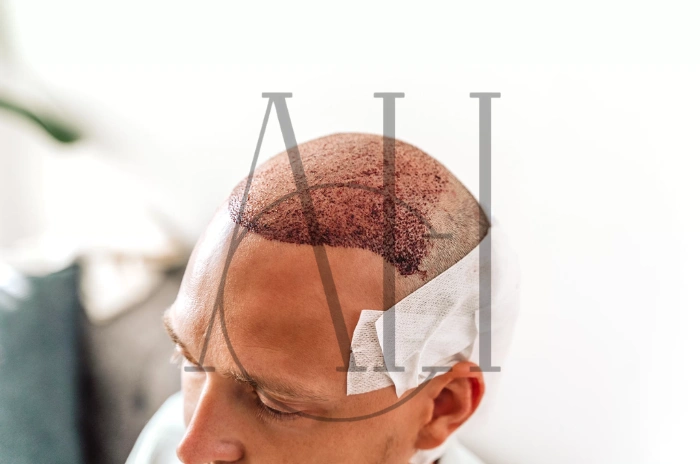Adderall is a widely prescribed medication for attention deficit hyperactivity disorder (ADHD) and narcolepsy. While it effectively manages symptoms like inattention and hyperactivity, some users report experiencing hair loss during treatment. Understanding whether Adderall directly causes hair thinning or if other factors contribute to this side effect is essential for patients and healthcare providers.
Hair loss associated with Adderall use may stem from multiple mechanisms including stress, nutritional deficiencies, and behavioral changes. This article explores the connection between Adderall and hair loss, identifies warning signs, and examines the underlying processes that may lead to shedding.
Table of Contents
ToggleHow Adderall May Lead to Hair Loss
Adderall contains amphetamine salts that stimulate the central nervous system. These compounds increase neurotransmitter activity, particularly dopamine and norepinephrine, which affect various bodily functions beyond cognitive enhancement. The relationship between ADHD medication hair loss and Adderall involves several interconnected pathways.
The medication’s stimulant properties can suppress appetite, leading to reduced food intake and potential nutritional deficiencies. When the body lacks essential vitamins and minerals like iron, zinc, biotin, and protein, hair follicles receive inadequate nourishment. This deficiency disrupts the normal hair growth cycle and may trigger premature shedding.
Additionally, Adderall increases metabolic rate and energy expenditure. This heightened metabolic state places additional demands on the body’s nutrient reserves. Without proper supplementation or dietary adjustments, individuals may develop deficiencies that manifest as hair thinning from Adderall.
The Role of Appetite Suppression
Appetite suppression represents one of the most common Adderall side effects. Many users report significant decreases in hunger, particularly during peak medication hours. This reduced caloric and nutrient intake creates an environment where hair follicles struggle to maintain their growth phase.
The hair growth cycle consists of anagen (growth), catagen (transition), and telogen (resting) phases. Nutritional deficiencies Adderall creates can prematurely shift follicles from the growth phase into the resting phase. When this occurs across numerous follicles simultaneously, noticeable shedding follows within two to three months.
Circulatory Changes and Scalp Health
Stimulant medications like Adderall affect blood vessel constriction and blood flow patterns. Some researchers suggest that altered circulation to the scalp may reduce oxygen and nutrient delivery to hair follicles. While direct evidence remains limited, reduced scalp perfusion could contribute to weakened hair structure and increased shedding.
Signs of Hair Loss While Taking Adderall
Recognizing hair loss early allows for timely intervention and potentially reversible outcomes. Several indicators suggest that Adderall hair loss may be occurring. Patients should monitor these signs and discuss concerns with their healthcare provider.
Increased hair shedding during daily activities represents the most obvious warning sign. Finding more strands on pillows, in the shower drain, or on clothing brushes indicates accelerated hair loss. While losing 50-100 hairs daily is normal, exceeding this range consistently warrants attention.
Visible thinning across the scalp, particularly at the crown or hairline, suggests progressive hair thinning. The scalp may become more visible through the hair, and hairstyles that previously concealed the scalp may no longer provide adequate coverage. These changes typically develop gradually over several months of Adderall use.
Physical Scalp Symptoms
An itchy scalp frequently accompanies medication-related hair loss. The irritation may result from changes in sebum production, scalp inflammation, or sensitivity to metabolic shifts caused by Adderall. Persistent itching combined with increased shedding strongly suggests a connection between the medication and hair changes.
Changes in hair texture also signal potential problems. Hair may become finer, more brittle, or lose its natural luster. These quality changes reflect compromised follicle health and inadequate nutrient supply during the growth phase.
Pattern Recognition
ADHD medication hair loss typically presents as diffuse thinning rather than localized bald patches. This pattern differs from androgenetic alopecia (male or female pattern baldness) and suggests a systemic cause rather than genetic predisposition. The entire scalp experiences gradual thinning rather than concentrated loss in specific regions.
Possible Mechanisms for Adderall-Related Hair Loss
Understanding the mechanisms behind Adderall-related hair loss requires examining how the medication affects multiple body systems. Several processes may independently or collectively contribute to shedding.
Telogen effluvium represents the most likely mechanism for Adderall and telogen effluvium connections. This condition occurs when significant stressors—physical, emotional, or chemical—shock the hair growth cycle. The stress triggers numerous follicles to enter the telogen phase simultaneously, leading to noticeable shedding two to four months later.
The physiological stress that Adderall places on the body through increased heart rate, elevated blood pressure, and heightened metabolic demands may trigger this response. The body interprets these changes as stressors requiring resource reallocation away from non-essential functions like hair growth.
Hormonal Fluctuations
Stimulant medications can influence hormone levels, including cortisol (the stress hormone). Chronically elevated cortisol disrupts the hypothalamic-pituitary-adrenal axis and affects various hormones that regulate hair growth. These hormonal imbalances may prolong the resting phase and shorten the growth phase.
Additionally, Adderall may affect thyroid function in susceptible individuals. Thyroid hormones play crucial roles in hair follicle cycling, and even subclinical thyroid dysfunction can cause hair thinning. Patients experiencing hair loss should undergo thyroid function testing to rule out this contributing factor.
Oxidative Stress
Amphetamines generate oxidative stress by increasing free radical production. These reactive molecules damage cellular components, including those in hair follicles. While the body possesses antioxidant defenses, prolonged stimulant use may overwhelm these protective systems and contribute to follicle damage.

Can Adderall Trigger Compulsive Hair Pulling
Trichotillomania, a disorder characterized by recurrent hair pulling resulting in noticeable hair loss, may develop or worsen in some Adderall users. The medication’s effects on neurotransmitter systems and behaviors create conditions that could facilitate compulsive behaviors in vulnerable individuals.
Adderall increases dopamine availability in the brain, which affects reward pathways and impulse control. While this mechanism improves ADHD symptoms, it may also lower inhibition thresholds for repetitive behaviors. Individuals with pre-existing tendencies toward compulsive actions may find these urges intensified during treatment.
The anxiety and restlessness that sometimes accompany Adderall side effects can manifest as increased touching, scratching, or pulling behaviors. These actions may initially provide temporary relief but can evolve into habitual patterns that result in significant hair loss.
Recognizing Compulsive Patterns
Differentiating between medication-induced shedding and trichotillomania requires careful observation. Compulsive pulling typically creates patchy, irregular bald spots rather than diffuse thinning. Individuals may experience tension before pulling and relief afterward, indicating psychological rather than purely physiological causes.
Patients who notice increased urges to touch or pull their hair while taking Adderall should discuss these behaviors with their prescriber. Alternative medications or behavioral interventions may help address both ADHD symptoms and compulsive behaviors without compromising hair health.
Other Common Side Effects of Taking Adderall
Beyond Adderall hair loss, users may experience various side effects that affect overall health and quality of life. Understanding the complete side effect profile helps contextualize hair changes within broader medication impacts.
Common Adderall side effects include insomnia, decreased appetite, dry mouth, headaches, and increased heart rate. Many users report weight loss due to appetite suppression, which directly relates to the nutritional deficiencies that may contribute to hair thinning from Adderall.
Cardiovascular effects represent serious considerations for long-term users. Elevated blood pressure and heart rate strain the cardiovascular system and may indirectly affect scalp circulation. Regular monitoring ensures these effects remain within safe parameters.
Psychological Effects
Mood changes constitute another category of Adderall side effects. Some individuals experience increased anxiety, irritability, or mood swings. These psychological shifts contribute to overall stress levels that may trigger or worsen stress hair loss.
The medication may also cause hyperfocus on bodily sensations, leading users to notice and potentially obsess over changes like hair loss more than they otherwise would. This heightened awareness can create additional anxiety that perpetuates stress-related shedding.
Long-Term Considerations
Prolonged Adderall use may lead to tolerance, requiring dose increases to maintain therapeutic effects. Higher doses typically produce more pronounced side effects, including those affecting hair health. Balancing symptom management with minimizing adverse effects requires ongoing communication with healthcare providers.
How Adderall Stress May Lead to Shedding
The relationship between stress hair loss and Adderall extends beyond direct medication effects. The lifestyle and physiological changes associated with stimulant use create multiple stress pathways that impact hair follicles.
Chronic activation of the stress response through Adderall’s stimulant properties maintains elevated cortisol levels. This prolonged stress state signals the body to conserve resources for essential functions, categorizing hair growth as non-essential. Consequently, follicles enter the resting phase prematurely, leading to synchronized shedding months later.
Sleep disturbances represent another stress mechanism. Adderall frequently causes insomnia or poor sleep quality, particularly when taken late in the day. Inadequate sleep prevents proper cellular repair and growth hormone release, both critical for healthy hair development.
Compounding Stress Factors
Individuals taking Adderall often face additional stressors related to their underlying ADHD or work/academic demands. The medication helps manage these challenges, but the cumulative stress load—medical condition, treatment side effects, and life demands—creates substantial physiological burden.
This multi-layered stress exposure makes users particularly vulnerable to telogen effluvium and other stress-related hair loss patterns. Managing stress through lifestyle modifications, adequate sleep, and relaxation techniques becomes essential for minimizing Adderall hair loss risk.
Recovery and Adaptation
Bodies typically adapt to chronic stressors over time, potentially explaining why some users experience hair loss initially that resolves despite continued Adderall use. As physiological systems adjust to the medication’s presence, stress responses may normalize and allow hair regrowth after Adderall adaptation occurs.
However, continuous high-dose use or frequent dose changes may prevent this adaptation, maintaining the stress state that promotes shedding. Stable dosing and comprehensive stress management optimize chances for hair recovery while maintaining ADHD symptom control.
Frequently Asked Questions About Does Adderall Cause Hair Loss? Signs and Mechanisms
Does Adderall cause hair loss as a side effect?
Yes, Adderall may contribute to hair loss through mechanisms including nutritional deficiencies, stress responses, and metabolic changes that disrupt normal hair growth cycles.
What are the signs of Adderall-related hair loss?
Signs include increased daily shedding, visible scalp thinning, itchy scalp, changes in hair texture, and finding more hair on pillows or in the shower drain.
How can Adderall lead to compulsive hair pulling?
Adderall affects dopamine pathways and may lower impulse control thresholds, potentially triggering or worsening trichotillomania in vulnerable individuals experiencing anxiety or restlessness.
Can stress from Adderall cause hair shedding?
Yes, the physiological stress from Adderall’s stimulant effects, combined with sleep disturbances and elevated cortisol, can trigger telogen effluvium and significant stress hair loss.




